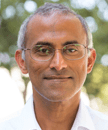Tolga Arul
 Tolga Arul received his Ph.D. degree on channel switching-triggered charging for Pay-TV over IPTV in computer science from Technical University Darmstadt, Germany. He joined the Center for Advanced Security Research Darmstadt (CASED), Germany as a research associate in the field of cyber-physical systems security in 2009. Since March 2017 he has been a post-doc at Security Engineering Group at the Technical University Darmstadt. His current research interests include trusted computing and embedded security applied to IoT, transportation, and broadcasting environments.
Tolga Arul received his Ph.D. degree on channel switching-triggered charging for Pay-TV over IPTV in computer science from Technical University Darmstadt, Germany. He joined the Center for Advanced Security Research Darmstadt (CASED), Germany as a research associate in the field of cyber-physical systems security in 2009. Since March 2017 he has been a post-doc at Security Engineering Group at the Technical University Darmstadt. His current research interests include trusted computing and embedded security applied to IoT, transportation, and broadcasting environments.
Abstract: Lightweight Security Solutions for IoT Implementations in Space
Due to their relatively low cost, Commercial Off-The-Shelf (COTS) devices have been gaining a foothold in space applications in recent years. Such devices can be used to implement a segment of the Internet of Things (IoT) in space. However, the operation of such devices in space, amongst other challenges, entails that detection of manipulated output data is hardly attainable, access for maintenance is infeasible, and the cost for redundant distribution is prohibitively high. Additionally, the cost of space missions still remains relatively high, in general. Furthermore, space applications can potentially have significant effects on a global scale. Consequently, these devices need to be adequately secured in a cost-efficient and practical way. In particular, security solutions proposed for these devices should be cost-efficient and lightweight, while remaining practical and flexible, in order to preserve the competitive advantages of using COTS devices in IoT space applications. Memory-based Physical Unclonable Functions (PUFs) are security primitives which possess these qualities. The proposed intrinsic memory-based PUFs are based on the unique characteristics of memory modules. As several of these modules are commonly included in the circuit design of most computing devices, PUF-based schemes are cost-efficient. Moreover, as no inclusion of additional dedicated security components, such as Trusted Platform Modules (TPMs) or other security (co-)processors, is required, memory-based PUFs appear to be an ideal light-weight solution for resource-constraint devices. Furthermore, certain PUF implementations, which utilise the startup values of specific memory types (SRAM, DRAM), can be used to secure and attest the integrity of the device itself. Other PUF implementations, which are based on other characteristics of either DRAM or Flash memory, can be used to secure the communication of the device by creating security tokens during run-time. As these implementation variants show, PUFs are able to act as flexible security primitives, which can provide practical security solutions. To this end, we investigate whether schemes based on memory-based PUFs can be used in the adverse conditions of space. In particular, we examine two general challenges that electronic devices face in space: temperature and radiation. For this purpose, we utilise a number of different PUF-related quality metrics to assess the effects of external influences. In conclusion, we can show that neither ambient temperature variations nor radiation can thwart the use of intrinsic memory-based PUFs for enhancing the security of IoT devices being employed in space applications.
Girish Chandran
Girish Chandran, Vice President and Chief Technical Officer, VIASAT. Girish joined Viasat in October 2007 as a Principal Engineer. In September 2013, he was appointed Chief Technology Officer — Commercial Networks and in May 2017, he assumed his current position as Vice President and Chief Technical Officer.
Girish has extensive experience building multimedia networks. Prior to joining Viasat, from 2001 to 2007, Girish served as Vice President of Engineering at Newtec America Inc., a satellite communications equipment provider. From 1995 to 2001, he held several roles, including Vice President of Systems Engineering, at Tiernan Communications Inc. (acquired by Radyne Comstream Inc.), a provider of video compression and transmission solutions.
Girish earned a Ph.D. degree in Electrical Engineering from the University of California, San Diego, an M.S. degree in Electrical Communication Engineering from the Indian Institute of Science and a BSc. degree in Physics from the University of Kerala.
Abstract: Connecting people, things and content via satellite: A technology and service provider perspective
Tarek A. Elgohary
 Tarek A. Elgohary is an assistant professor at the mechanical and aerospace engineering department at the University of Central Florida. He is the director of the Astrodynamics and Space Robotics Laboratory (ASRL). Before joining UCF, he was a postdoctoral research associate at Texas A&M Aerospace Engineering and a visiting scholar in the department of Mechanical and Aerospace Engineering at the University of California, Irvine He received his BS in Mechanical Engineering from the American University in Cairo and his Master and PhD in Aerospace Engineering from Texas A&M University. His research interests are in astrodynamics, optimal control, robotics and space situational awareness.
Tarek A. Elgohary is an assistant professor at the mechanical and aerospace engineering department at the University of Central Florida. He is the director of the Astrodynamics and Space Robotics Laboratory (ASRL). Before joining UCF, he was a postdoctoral research associate at Texas A&M Aerospace Engineering and a visiting scholar in the department of Mechanical and Aerospace Engineering at the University of California, Irvine He received his BS in Mechanical Engineering from the American University in Cairo and his Master and PhD in Aerospace Engineering from Texas A&M University. His research interests are in astrodynamics, optimal control, robotics and space situational awareness.
Abstract: A New Method for Computing Orbital Probability of Collision and Autonomous Space-based Orbit Estimation with Multiple Agent Nodes.
Ramesh K. Gupta
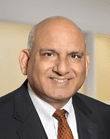 Ramesh K. Gupta received Ph.D. and M.S. degrees in electrical engineering from the University of Alberta, Canada; and a B.S. degree (with Honors) in Electronics and Communications Engineering from PEC University of Technology, India. He also earned an MBA degree from the University of Pennsylvania. Dr. Gupta has published more than 90 conference and journal papers and three ‘book chapters’ on microwave devices, passive and active RF circuits, MMIC designs and their insertion in to satellite and wireless systems. He holds four U.S. patents. He has received many honors and awards including Alberta Government Telephone’s Centennial Fellowship for graduate research in telecommunications and COMSAT Laboratories’ Research Award. He was co-recipient of the Best Paper Awards at the 1992 International Digital Satellites Communications Conference, Denmark and 2011 AIAA Satellite Systems Conference, Japan. Dr. Gupta is a Fellow of the IEEE. He received 2012 Joseph Wharton Award from the Wharton DC Club for his career contributions. Dr Gupta has served on IEEE MTT-S as a voting Adcom member since 2013 and has been responsible for initiating several successful initiatives as IEEE MTT-S Education Committee Chair. He currently serves as Chair of newly created MTT-S Marketing and Communications Committee.
Ramesh K. Gupta received Ph.D. and M.S. degrees in electrical engineering from the University of Alberta, Canada; and a B.S. degree (with Honors) in Electronics and Communications Engineering from PEC University of Technology, India. He also earned an MBA degree from the University of Pennsylvania. Dr. Gupta has published more than 90 conference and journal papers and three ‘book chapters’ on microwave devices, passive and active RF circuits, MMIC designs and their insertion in to satellite and wireless systems. He holds four U.S. patents. He has received many honors and awards including Alberta Government Telephone’s Centennial Fellowship for graduate research in telecommunications and COMSAT Laboratories’ Research Award. He was co-recipient of the Best Paper Awards at the 1992 International Digital Satellites Communications Conference, Denmark and 2011 AIAA Satellite Systems Conference, Japan. Dr. Gupta is a Fellow of the IEEE. He received 2012 Joseph Wharton Award from the Wharton DC Club for his career contributions. Dr Gupta has served on IEEE MTT-S as a voting Adcom member since 2013 and has been responsible for initiating several successful initiatives as IEEE MTT-S Education Committee Chair. He currently serves as Chair of newly created MTT-S Marketing and Communications Committee.
Abstract: The Role of Space Based Networks in the emerging IoT & 5G Wireless Infrastructure
Several satellite systems offer global and regional connectivity and IP access largely through Geostationary (GEO) space-based network platforms. Past few years have witnessed new entrants in the satellite industry with High Throughput Satellites (HTS) at higher frequency bands and proposals for development of Low Earth Orbit (LEO) and Medium Earth Orbit (MEO) satellite systems. This renewed interest in satellite systems is due to exponential growth in data traffic worldwide, emerging Machine-to-Machine (M2M), new Internet of Things (IoT) applications and increased satellite and terrestrial industry focus on 5G standards, systems and technologies. These trends are resulting in rapid convergence between space based and terrestrial networks with flexible, on-demand data transfers between satellite and terrestrial network nodes. This presentation will focus on market and system drivers in the evolution of satellite based fixed (FSS) and mobile (MSS) satellite services. Trends in space-based network technologies resulting in significant capacity enhancements, use of very narrow spot beams in satellite networks with flexible modulation schemes and signal routing will be addressed.
David J. Israel
 David J. Israel is the NASA Goddard Space Flight Center’s Exploration and Space Communications Projects Division Architect and the Laser Communications Relay Demonstration (LCRD) mission Principal Investigator. He has been working on various aspects of space communications systems since joining NASA in 1989. He received a bachelor’s degree in electrical engineering from Johns Hopkins University in 1989 and a master’s degree in electrical engineering from George Washington University in 1996. He has led the development of various Space Network/Tracking and Data Relay Satellite System (TDRSS) operational systems and has served as the principal investigator for multiple communications technology activities concerning advanced space communications concepts and networking protocols, including the LPT CANDOS experiment on the Space Shuttle STS-107 mission and Delay/Disruption-Tolerant Networking demonstrations on the Lunar Laser Communications Demonstration. He is a NASA delegate to the international Interagency Operations Advisory Group (IOAG) and co-chair of the IOAG Space Internetworking Strategy Group.
David J. Israel is the NASA Goddard Space Flight Center’s Exploration and Space Communications Projects Division Architect and the Laser Communications Relay Demonstration (LCRD) mission Principal Investigator. He has been working on various aspects of space communications systems since joining NASA in 1989. He received a bachelor’s degree in electrical engineering from Johns Hopkins University in 1989 and a master’s degree in electrical engineering from George Washington University in 1996. He has led the development of various Space Network/Tracking and Data Relay Satellite System (TDRSS) operational systems and has served as the principal investigator for multiple communications technology activities concerning advanced space communications concepts and networking protocols, including the LPT CANDOS experiment on the Space Shuttle STS-107 mission and Delay/Disruption-Tolerant Networking demonstrations on the Lunar Laser Communications Demonstration. He is a NASA delegate to the international Interagency Operations Advisory Group (IOAG) and co-chair of the IOAG Space Internetworking Strategy Group.
Abstract: A Space Mobile Network (SMN) Architectural Framework
Michael H. Jones
Michael H. Jones is a partner at Rothwell, Figg, Ernst & Manbeck, P.C. in Washington, DC. Mr. Jones’s practice covers all aspects of patent law, including patent litigation, post-grant proceedings, patent prosecution, opinions, and counseling. Additionally, Mr. Jones has experience in drafting and prosecuting patent applications before the USPTO, and in overseeing the prosecution of foreign counterpart applications. He has experience in a broad range of technologies, including semiconductor devices and manufacturing, integrated circuits, hardware and protocols for wireless communications, digital media and storage, electro-mechanical systems, and Internet-based commerce and security software.
Abstract: Securing and Enforcing Intellectual Property Rights for IoT and IoS Innovations
The Internet of Things (IoT) is becoming an increasingly important, and frequent, subject of intellectual property (IP). In this environment, there is a growing need for a comprehensive understanding of IP strategy when developing and deploying new products and technologies. The intersection of IoT and the Internet of Space (IoS) compounds the complexities and challenges surrounding IP, such as those regarding jurisdiction for enforcement of IP rights, strategies for patenting IoT/IoS innovations, and navigating government requirements.
This talk will present an overview of securing and enforcing IP rights in the United States, including an explanation of what “intellectual property” is, the different forms of intellectual property protection that are available (e.g., patents, trademarks, copyrights, and trade secrets), and how to implement an effective IP strategy under the current laws. The United States has a number of legal doctrines that make it an excellent – and unique – jurisdiction to leverage patent rights pertaining to all aspects of IoT and IoS, including satellite and ground-based innovations, sensors, and transmission and connectivity improvements. Additionally, I will provide a snapshot of IoT/IoS activity at the Unites States Patent Office (USPTO), with a discussion of filing statistics, examples of IoT/IoS technologies for which the USPTO has granted patent protections, and USPTO rules and guidance applicable to this field. Finally, I will address a number of jurisdictional issues that will be central to many IoS disputes due to the varied technologies and physical locations for IoS, with recommendations for best practices and filing strategies to help avoid common IP pitfalls.
Dr. Kumar Navulur
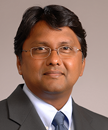 Dr. Navulur is the Sr. Director of Business Development at DigitalGlobe, a MAXAR company. He is also the President of DigitalGlobe Foundation. Dr. Navulur received his doctoral degree in engineering from Purdue University. He has over 23 years of experience in the commercial He currently is a member of the board of directors of Open Geospatial Consortium (OGC). He represents commercial remote sensing industry at United Nations group of experts on Global Geospatial Information Management (UNGGIM). He is an invited speaker at various international conferences including World Bank, UN, Geospatial World Forum, and others.
Dr. Navulur is the Sr. Director of Business Development at DigitalGlobe, a MAXAR company. He is also the President of DigitalGlobe Foundation. Dr. Navulur received his doctoral degree in engineering from Purdue University. He has over 23 years of experience in the commercial He currently is a member of the board of directors of Open Geospatial Consortium (OGC). He represents commercial remote sensing industry at United Nations group of experts on Global Geospatial Information Management (UNGGIM). He is an invited speaker at various international conferences including World Bank, UN, Geospatial World Forum, and others.
Abstract: Enabling IoT from Earth Observation Satellites from Space
Dr. Steven C. Reising
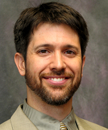 Dr. Steven C. Reising is a Professor of Electrical and Computer Engineering at Colorado State University, Fort Collins, CO. Dr. Reising received the Ph.D. degree in electrical engineering from Stanford University in 1998, where he was supported by a NASA Earth Systems Science Fellowship. Prior to that, he received the B.S.E.E. (magna cum laude) and M.S.E.E. degrees in electrical engineering from Washington University in St. Louis. Dr. Reising served as a Summer Faculty Fellow for three years in the Remote Sensing Division of the Naval Research Laboratory in Washington, DC. In the first half of 2014, he was a Visiting Faculty Member of the Sorbonne Universities, University of Paris VI, Université Pierre et Marie Curie, Paris, France.
Dr. Steven C. Reising is a Professor of Electrical and Computer Engineering at Colorado State University, Fort Collins, CO. Dr. Reising received the Ph.D. degree in electrical engineering from Stanford University in 1998, where he was supported by a NASA Earth Systems Science Fellowship. Prior to that, he received the B.S.E.E. (magna cum laude) and M.S.E.E. degrees in electrical engineering from Washington University in St. Louis. Dr. Reising served as a Summer Faculty Fellow for three years in the Remote Sensing Division of the Naval Research Laboratory in Washington, DC. In the first half of 2014, he was a Visiting Faculty Member of the Sorbonne Universities, University of Paris VI, Université Pierre et Marie Curie, Paris, France.
Dr. Reising’s research interests span a broad range of remote sensing disciplines, including remote sensing of the Earth’s atmosphere and oceans from airborne platforms, small satellites and CubeSats, passive remote sensing (radiometer) systems based on low-noise monolithic microwave integrated circuits (MMICs) from microwave to sub-millimeter-wave and THz frequencies (18-880 GHz), lidar systems for sensing temperature and winds in the middle and upper atmosphere, lighting-ionosphere interactions and atmospheric electrodynamics. He has been Principal Investigator of 14 grants over the past 18 years from NASA, National Science Foundation (NSF), Department of Defense, Office of Naval Research, Naval Research Laboratory, NPOESS, Ball Aerospace & Technologies Corp., and the European Space Agency. Reising has served as academic/research advisor for 16 M.S./Ph.D. students who graduated and are employed by university, industry and government laboratories in the U.S., Europe and Asia.
Abstract: Small Satellite Constellations to Provide Rapid-Refresh, Precise Observations of Severe Storms, Hurricanes and Tropical Cyclones
Jim Schier
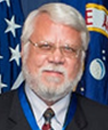 Jim Schier is the Chief Architect and Deputy Director of System Engineering for NASA’s Space Communications and Navigation Program at NASA Headquarters. He leads NASA and international studies on the evolution of NASA’s space communications networks to meet the needs of future science and human exploration missions. He joined NASA in 2004 after 25 years in industry where he worked on civil, defense, intelligence, and commercial space systems. At Northrop Grumman, he supported re-architecting the National Reconnaissance Office’s ground systems, led system engineering on commercial satellite systems including Iridium and Thuraya, and was a lead system engineer on the Orbital Space Plane. Mr. Schier was Chief System Engineer on the International Space Station at Grumman. At TRW, he managed flight software development on the MILSTAR Communications Satellite and led integration of materials processing experiments for the 1985 Shuttle Spacelab 3 mission. He received a Silver Snoopy award for his work on Spacelab 3 and a NASA Administrator’s Group Award for the team that redesigned the Space Station. In 2015, he was awarded the NASA Exceptional Service Medal “for exceptional service and exemplary leadership in creating NASA’s future Space Communications and Navigation Architecture.”
Jim Schier is the Chief Architect and Deputy Director of System Engineering for NASA’s Space Communications and Navigation Program at NASA Headquarters. He leads NASA and international studies on the evolution of NASA’s space communications networks to meet the needs of future science and human exploration missions. He joined NASA in 2004 after 25 years in industry where he worked on civil, defense, intelligence, and commercial space systems. At Northrop Grumman, he supported re-architecting the National Reconnaissance Office’s ground systems, led system engineering on commercial satellite systems including Iridium and Thuraya, and was a lead system engineer on the Orbital Space Plane. Mr. Schier was Chief System Engineer on the International Space Station at Grumman. At TRW, he managed flight software development on the MILSTAR Communications Satellite and led integration of materials processing experiments for the 1985 Shuttle Spacelab 3 mission. He received a Silver Snoopy award for his work on Spacelab 3 and a NASA Administrator’s Group Award for the team that redesigned the Space Station. In 2015, he was awarded the NASA Exceptional Service Medal “for exceptional service and exemplary leadership in creating NASA’s future Space Communications and Navigation Architecture.”
Abstract: Space Communications for Everyone: The IoT for Users In Space
Prof. Dr. Schilling
Prof. Dr. Schilling had in space industry responsibility in Earth observation and interplanetary satellites (such as HUYGENS to the Saturnian moon Titan and ROSETTA for exploration of comets, where adaptive control technologies assisted handling of uncertainties), before he was appointed professor and chair for Robotics and Telematics at University Würzburg. In parallel he is president of the research company „Center for Telematics (ZfT)“, focussing on applications combining Telecommunication + Automation + Informatics. His team built the first German pico-satellite UWE-1, launched 2005 to optimize Internet in space. He published more than 350 papers and received several awards, including the Walter-Reis-Award for Robotic Innovations 2008 and 2012, as well as an Advanced Grant of the European Research Council (highest valued European research award) for research on control of networked distributed satellite systems. His research interests focus in Internet of Space via small satellites. He is full member of the International Academy of Astronautics and was Consulting Professor at Stanford University 2002-2006.
In international professional societies he served in IEEE as chair of „TC on Networked Robotics“ and in IFAC (International Federation on Automatic Control) as Coordinating Chair for the area “Computers & Control” after having been TC chair for „Telematics: Control via Communication Networks“ and for “Aerospace”.
Abstract: Global Low-cost Low-latency Low Earth Orbit Communications Networks for IoT
Dr. Siegfried Voigt
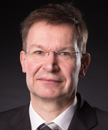 Since nearly 20 years, Dr. Siegfried Voigt works in the department satellite communications at the German Space Administration (DLR) in Bonn. He is currently leading the coordination and management of national funded and supported projects. The first German GEO communication satellite since more than 30 years, Heinrich-Hertz (H2SAT), is in development under the guidance of his department. Dr. Voigt is also project manager of the mission S-NET, which is a German contribution to demonstrate the feasibility of IoT technology based on nanosatellites. As one of the first missions ever, it could demonstrate multihop intersatellite link technology within a network of four nano satellites.
Since nearly 20 years, Dr. Siegfried Voigt works in the department satellite communications at the German Space Administration (DLR) in Bonn. He is currently leading the coordination and management of national funded and supported projects. The first German GEO communication satellite since more than 30 years, Heinrich-Hertz (H2SAT), is in development under the guidance of his department. Dr. Voigt is also project manager of the mission S-NET, which is a German contribution to demonstrate the feasibility of IoT technology based on nanosatellites. As one of the first missions ever, it could demonstrate multihop intersatellite link technology within a network of four nano satellites.
Dr. Siegfried Voigt received his PhD in physics at 1996 from the „Rheinische Friedrich-Wilhelms“ university in Bonn, Germany, where he researched at the electron accelerator facility ELSA. The following five years he was employed at the “Forschungszentrum” Karlsruhe (KIT) where he researched on the construction of the synchrotron radiation facility ANKA and later in the microsystem techniques program.
Abstract: S-NET One Year in Orbit: Verification of a Narrowband Nanosatellite Network
Networked swarms or constellations of small nanosatellites with intersatellite link (ISL) capability will enable new applications and missions such as data collection with distributed sensors (e.g. animal research) or machine type communication to facilitate IoT. Especially when it comes to provide ubiquitous connectivity with low-latency, a cost-efficient space-born solution is inevitable. Thus, miniaturized narrowband multihop intersatellite link is a key to increase coverage, redundancy and system availability for communication.
As one of the first nanosatellite missions ever, S-NET could successfully demonstrate multihop intersatellite communication in orbit in S-Band frequency. The S-Band Network for cooperating Satellites (S-NET) is a cluster of four nanosats developed by the Technische Universität Berlin (TUB) and successfully launched in Frebruary 2018. Since that time the S NET satellites have performed a number of communication experiments using intersatellite links.
The talk will present the on-orbit results and provide a description of the communication network architecture of the mission S-NET. The communication payload is based on a software defined radio (SDR) with an output power of 27 dBm and an RF bandwidth of 120 kHz in S band. A low power consumption of around 10 Watt and a weight of approximately 0.5 kg make this solution suitable for nano and Cubesats. The proprietary communication protocols have been developed to meet the requirements of a wide range of applications and orbital geometries. In fact, the use of low gain antennas in combination with an automatic antenna search algorithm allowed a significant weakening of the requirements on the attitude control. Furthermore, no fixed orbital geometry is required. All this make the developed technology suitable for satellite swarms, where the signals can occur randomly in time and direction. The bandwidth efficiency has increased due to the use of an adaptive coding and modulation technique. A reliable intersatellite communication has been demonstrated over a wide range of distances from nearly zero up to 200 kilometers with low gain antennas with the maximum gain of approximately 6 dBi only. Finally, future work and potential applications based on S NET will be discussed.
Martin M. Zoltick
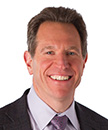 Martin M. Zoltick is a shareholder with Rothwell, Figg, Ernst & Manbeck, P.C. in Washington, DC. He has been practicing in the field of intellectual property and technology law for over 25 years and represents a wide range of U.S.-based and international clients, including independent inventors, entrepreneurs, emerging businesses, middle market and mature companies, as well as investors and venture capitalists. Mr. Zoltick is a registered patent attorney and has substantial experience in handling matters before the U.S. Patent and Trademark Office, including post-grant proceedings before the Patent Trial and Appeal Board, and the preparation and prosecution of patent applications in a broad range of technologies and fields, with a concentration in the areas of computer software and telecommunications. Mr. Zoltick is also a Certified Information Privacy Professional in the United States (CIPP/US) and handles matters related to cybersecurity, privacy, and data protection, including working closely with clients to ensure that they comply with the evolving laws and regulations related to privacy and that they are taking appropriate measures to protect and secure valuable intellectual property and data.
Martin M. Zoltick is a shareholder with Rothwell, Figg, Ernst & Manbeck, P.C. in Washington, DC. He has been practicing in the field of intellectual property and technology law for over 25 years and represents a wide range of U.S.-based and international clients, including independent inventors, entrepreneurs, emerging businesses, middle market and mature companies, as well as investors and venture capitalists. Mr. Zoltick is a registered patent attorney and has substantial experience in handling matters before the U.S. Patent and Trademark Office, including post-grant proceedings before the Patent Trial and Appeal Board, and the preparation and prosecution of patent applications in a broad range of technologies and fields, with a concentration in the areas of computer software and telecommunications. Mr. Zoltick is also a Certified Information Privacy Professional in the United States (CIPP/US) and handles matters related to cybersecurity, privacy, and data protection, including working closely with clients to ensure that they comply with the evolving laws and regulations related to privacy and that they are taking appropriate measures to protect and secure valuable intellectual property and data.
Abstract: IoT and IoS Technologies and the Evolving Data Privacy and Cybersecurity Legal Landscape: “Danger, Will Robinson!”
New laws are taking effect across the globe to regulate the collection, use, transmission, retention, disclosure and disposal of personal information. At the same time, the rate of cyber attacks, data breaches and unauthorized use of personal data is growing exponentially. The massive proliferation of IoT devices and technology, now expanded even further to include space-based technologies, gives rise to unique and challenging considerations from a legal and regulatory perspective. With the autonomous data collection, transfer, tracking, analysis, and decision-making enabled by IoT and IoS technologies that will no doubt include personal information, it is more important than ever to understand the rights and obligations of individuals and organizations with respect to personal information. With the present regulatory framework and knowledge of where it is heading, companies can expect to continue to face rising costs and escalating risks associated with their privacy and data security practices.
In this presentation, I will provide an overview of some of the new data privacy laws, rules and regulations that are, or soon will be, in effect, including the EU’s General Data Protection Regulation (GDPR), the California Consumer Privacy Act (CaCPA), and other similar regulations being adopted around the World. I will address some of the unique and challenging considerations in applying these new laws, rules, and regulations to IoT and IoS technologies. I will then outline cyber security and data protection best practices and compliance programs to help organizations comply with the evolving new data privacy requirements, and touch on the role of new technologies in mitigating risks and supporting compliance.



